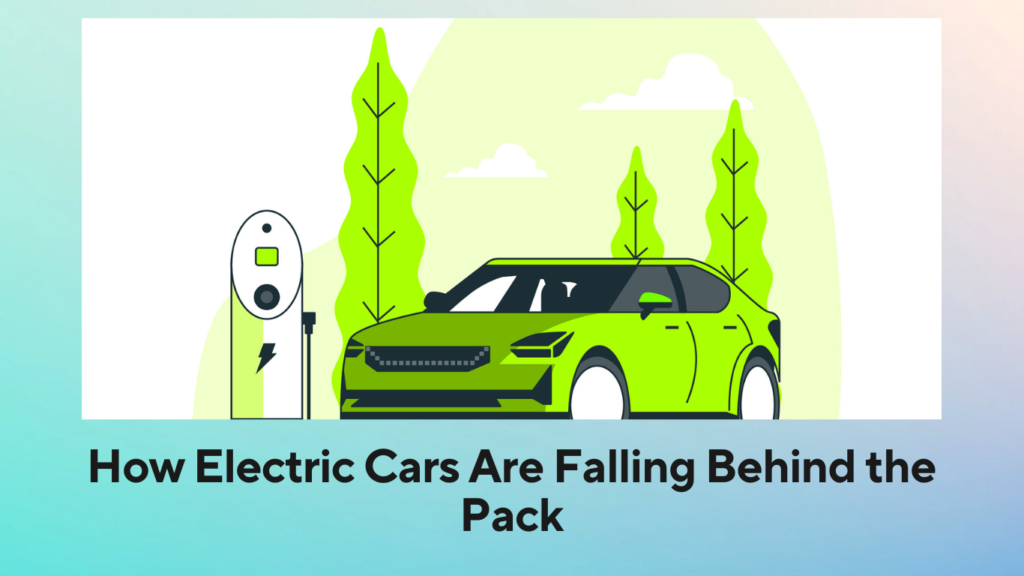
2054 has been a year of massive setbacks in the market size of electric vehicles or cars. The affordability was marked as low, with higher interest rates, and consumers’ keenness towards electric cars remained stagnant for a major part of the year. Irrespective of the complexities, the automakers are selling a recorded value of 1.3 million EVs in the US market especially due to the new model releases with a wave of incentive expenditure.
It is undoubtedly offering room to expand the EV market, with the Kelley Blue Book data revealing that electric cars are grappling to capitalize on the pace of their massive counterparts like trucks or SUVs. In 2024, an all-inclusive electric car was sold with an average of about 7,700 units, about half the average of the electric SUVs recorded in a similar time frame. There are a greater number of Americans warming up to the EVs, with several of them unwillingly letting go of the high-riding seat on the road.
A Struggling Segment
Whenever there are any queries regarding the love of America towards trucks and SUVs, the buyers offer clear answers in 2024. The consumers often bought a lot more trucks and SUVs across 40 varied all-electric options included in the data of KBB. On average, the EV SUV sold was 13,500 units the past year, with about 12,000 units in 2023. The trucks often faired in the better way by selling almost an average of 18,500 units the past year, as they had been down from the 22,000 average in 2023.
Electric cars have been complex. In 2024, they sold an average of 7,700 units, down 43% from 2023. However, among the about 14 electric cars available in the market, a new one fared notably better than the rest. Although BMW managed to sell around 23,403 i4 units, the previous year’s niche models, such as the Genesis G80 and Fiat 500e, failed to notch even 1,000 sales throughout the year.
High Prices
The electric vehicles that have been on sale recently in America are noted as the expensive end of the automotive market. Industrial analysts stated by referring to Cadillac Lyriq electric vehicles and the Kia EV9 that between $50,000 and $60,000 is what they are getting out of the Kia and Cadillac. However, these two never face each other.
Other than being costly for the average buyer with the limited selection considering the body style, the vast majority are considerably costlier SUVs with a couple of sedans or smaller cars for the customers who wish to get something different. The target customer is also transitioning while selling more EVs indicating to reach right out of the main knowledgeable EV enthusiasts.
While the COVID shock witnessed a retreat, it is learned that while you are scaling EVs to 5,000 to 7,000 units every month, you can move into the earlier majority of customers who are unwilling to pay a notable premium for the EVs as this is a huge time for the Ford family.
It is the reason why Ford recently dropped their prices for the Mach-E SUV and the reason why Farley created their team to operate on the cheaper EV engineering platforms that form the basis of the future models here. Furthermore, to simplify things for its drivers, the other automakers in the United States agreed to make the switch over the similar charging standards as used by Tesla, which is still regarded as the biggest seller of EVs. It indicates that for a couple of years, almost every EV sold in the US bears a similar kind of charging port while using the same kind of charger.
A Big Tesla-Sized Caveat
Although 2024 witnessed that the overall market share of Tesla shrunk about 6% in the United States the automaker stays as the dominant force in the market of EV. The sales of the Model 3 and Model Y are the statistical outliers. Additionally, the leading duo account of Tesla for over 43% of the whole EV market in the United States. Since the outlier quality, they decided to remove them from the calculations as they would gain a better idea about the average sales that rely on the EV’s body type.
Charging Needed
There is a constant lack of public charging. The National Renewable Energy Laboratory, part of the US Department of Energy, estimates that the US will require 182,000 fast chargers for EVs by 2030. However, as noted by the DOE, there are currently less than 40,000, with about a quarter of the ones in California. In addition to the raw numbers, EV chargers are recently available at a lower level with consumers in terms of reliability, as noted through the surveys conducted by JD Power.
Both the vehicle issues include the related prices as well as the public charging. Individuals who can afford to buy luxury-priced vehicles are prone to have their home in the suburbs with a garage where they would get the car charged overnight. Public chargers are often more essential to people who can afford neither an expensive vehicle nor even a house with private parking. Finally, the automakers are undertaking the right steps in getting something done about it, tapping into the recently available federal funds along with their own money for installing the chargers.
Credit Confusion
Considerable tax credits are often available to aid with the cost offset of buying EVs with intricate rules. A few of them arrive with limitations on where the vehicles are built with the battery pack and the parts it is from, along with the vehicle prices and the buyer’s household income. Several models are turning eligible with the automakers undergoing the challenging application process. At the start of this year, the customers would often claim the tax credit like the rebate involved with the time of purchase instead of waiting till they are filing for their taxes.
Leasing often offers consumers the right way to gain tax credits. Due to the way the tax laws are written, leased vehicles are exempt from the restrictions on federal tax credits, and automakers offer the tax credit as a lease incentive.
Final Thoughts
America’s affinity for bigger cars is hardly breaking news, with KBB data suggesting that the gap between all-electric car and SUV sales is widening. This is ironic considering the apparent sustainability-based mission of electrification. The material-intensive nature of the bigger batteries for trucks and SUVs forms the trends as the major point of concern across an industry targeting efficient and accessible EVs.

